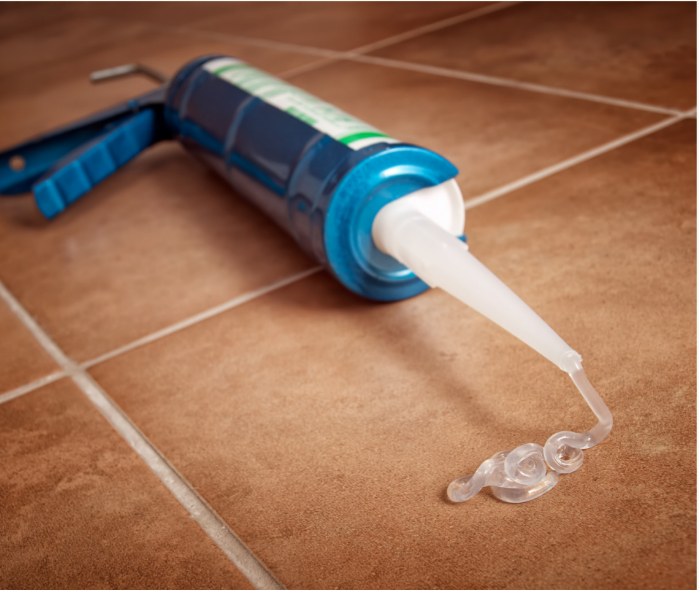Removing construction substances
27 Jun 2022, Learn, Prove Your Know How, Technical

Construction work can be messy, particularly when you’re dealing with sealants, adhesives and expanding foams. Generally, the sooner any spilt substance is removed, the easier it is to clean up, but make sure you use the right solvent
The secret to successful removal of spilt construction substances is understanding their composition and characteristics and using the correct solvent for the particular substance.
Stay safe during use
Before using sealants, adhesives or expanding foams, you should be familiar with the product’s material safety data sheet. This is provided by the manufacturer and contains information about the product including handling, hazards, precautions to take and dealing with spills.
Construction substances and the solvents used to clean up and remove them are often strong chemicals that must be handled and disposed of with care. Always follow the manufacturer’s instructions for handling and use. General precautions taken during their use include:
- Using personal protective equipment (PPE).
- Using a respirator when recommended to do so by the manufacturer.
- Ensuring that spaces are well ventilated.
Latex and silicone sealants
There are two categories of sealants – acrylic or latex and silicone:
- Latex sealants are typically used for filling gaps between the wall or ceiling and trims, where the sealant is not frequently exposed to water and where painting may be required.
- Silicone sealants provide a waterproof barrier, so they are typically used around baths, showers, sinks and toilets. They also have reasonably good resistance to weathering and UV and can be used in a range of exterior applications.
Removing latex sealant residue
Latex sealants clean up well with water so spills should be wiped up immediately with a damp cloth.
Once hardened, the only way to remove residual latex sealant is by scraping. Apply heat (depending on the substrate, use a heat gun or hairdryer or pour on hot water) to soften the sealant and make removal easier.
Removing silicone sealant residue
Silicone sealant residue should also be removed as soon as it is spilt, as it is difficult to remove once it has cured. Depending on the surface, a cloth
dipped in rubbing alcohol (isopropyl alcohol), methylated spirits (also referred to as denatured alcohol) or mineral turpentine may be used to remove residual sealant before it has cured. Before applying any solvent, always spot test on an inconspicuous part of the substrate.
Once sealant has cured, the first step is to scrape off as much residual sealant as possible using a scraper or putty knife. How to remove the remaining residual sealant depends on the substrate:
- For non-porous surfaces such as metal, glass, plastics: wipe over the residual sealant with a cloth or sponge soaked in mineral turpentine or methylated spirits. The solvent will soften the sealant, making it easier to scrape off. If the solvent used is mineral turpentine, wash the area with mild detergent and warm water once the sealant has been removed.
- For porous surfaces such as concrete, timber and brick: use a heat gun or hot water (concrete and brick only) to soften the sealant. Once softened, the residual sealant can be scraped off. Wipe the area with a cloth dipped in rubbing alcohol to remove any remaining residue if required. An alternative for concrete is to soak a cloth in rubbing alcohol and place on the residual sealant. Leave for several hours or overnight until the sealant has softened and can be scraped off. Dab on more rubbing alcohol as necessary to keep the sealant soft while scraping.
- For carpet: scrape up as much sealant as possible, then dab rubbing alcohol onto the remaining sealant, working it through the carpet fibres with your fingers while wearing gloves. Leave for a few minutes, then dab off using a damp cloth and warm water. Wash the carpet using mild detergent and warm water to remove the rubbing alcohol if required.
Removing construction adhesive residue
Residual construction adhesive should also be wiped up as soon as possible using rubbing alcohol, white vinegar or a proprietary adhesive remover. Once dry, it becomes very difficult to remove.
- To remove construction adhesive once it has dried, scrape off as much as possible using a scraper or putty knife. On timber, take care not to gouge the scraper into the timber. Removal of the remaining residual adhesive depends on the substrate:
- For non-porous surfaces such as metal, glass, tiles and some plastics: soften the adhesive using rubbing alcohol or white vinegar, or by heating. Take care not to overheat glass or plastic surfaces. Scrape off the softened adhesive, then wipe with a cloth dipped in mineral turpentine to remove any remaining residue. Wash the area using mild detergent and warm water to remove any mineral turpentine.
- For concrete: pour boiling water onto the adhesive and leave for several minutes to allow it to soften. It can then be scraped or scrubbed off.
- For timber flooring and decking, and granite, marble and engineered stone benchtops: acetone may be used but must be used cautiously. Always first test the substrate in an inconspicuous location with a small amount of acetone. If there is no damage to the substrate, dab a small amount of acetone on the dried adhesive to soften it, then gently rub or scrape the area to remove the adhesive.
Removing construction adhesive from carpet
To remove construction adhesive from carpet before it has dried, use paper towels or cloths to remove as much as possible. Dab the residual adhesive with a cloth soaked in white vinegar or rubbing alcohol. Rinse the cloth in warm water and repeat until the adhesive has been removed.
Alternatively, use a proprietary adhesive remover but test a small section of the carpet in an inconspicuous location first to ensure that the remover will not damage the carpet. Follow the manufacturer’s instructions to remove the adhesive.
Adhesive that has dried onto the carpet fibres will generally need to be cut out.
Removing polyurethane foam insulation residue
Use acetone to dissolve uncured polyurethane foam by dabbing or wiping the substrate with a cloth dipped in acetone, then rub the area to remove the foam. Always first test the substrate in an inconspicuous location with a small amount of acetone.
Acetone will not work on cured polyurethane foam, so once it has cured, the polyurethane foam must be scraped or sanded off.
Article by Alide Elkink, Freelance Technical Writer. This article was first published in Issue 189 of BRANZ Build magazine. www.buildmagazine.org.nz. Image supplied by BRANZ.
Register to earn LBP Points Sign in
2 Comments
Leave a Reply
You must be logged in to post a comment.




Very helpful information
can be a messy job